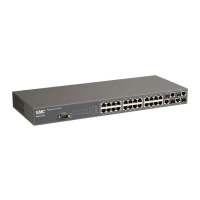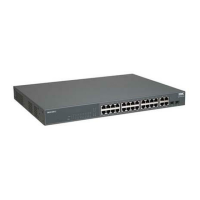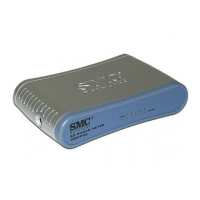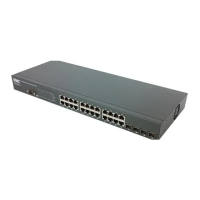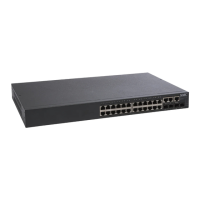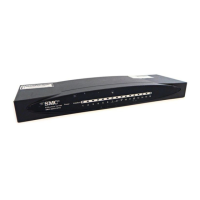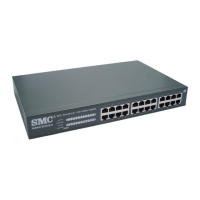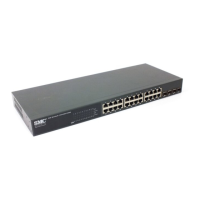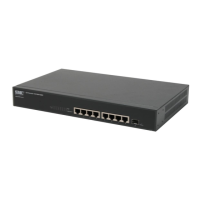C
ONFIGURING
HTTPS
6-7
Configuring HTTPS
You can configure the switch to enable the Secure Hypertext Transfer
Protocol (HTTPS) over the Secure Socket Layer (SSL), providing secure
access (i.e., an encrypted connection) to the switch’s web interface.
Command Usage
• Both the HTTP and HTTPS service can be enabled independently on
the switch. However, you cannot configure both services to use the same
UDP port.
• If you enable HTTPS, you must indicate this in the URL that you specify
in your browser: https://device[:port_number]
• When you start HTTPS, the connection is established in this way:
- The client authenticates the server using the server’s digital certificate.
- The client and server negotiate a set of security protocols to use for
the connection.
- The client and server generate session keys for encrypting and
decrypting data.
• The client and server establish a secure encrypted connection.
A padlock icon should appear in the status bar for Internet Explorer 5.x
or above and Netscape Navigator 6.2 or above.
Server 1:
Server IP address: 192.168.1.25
Communication key with RADIUS server: *****
Server port number: 181
Retransmit times: 5
Request timeout: 10
Console#config
Console(config)#authentication login tacacs 22-5
Console(config)#tacacs-server host 10.20.30.40 22-13
Console(config)#tacacs-server port 200 22-14
Console(config)#tacacs-server key green 22-14
Console(config)#exit
Console#show tacacs-server 22-15
Server IP address: 10.20.30.40
Communication key with tacacs server: *****
Server port number: 200
Console(config)#
